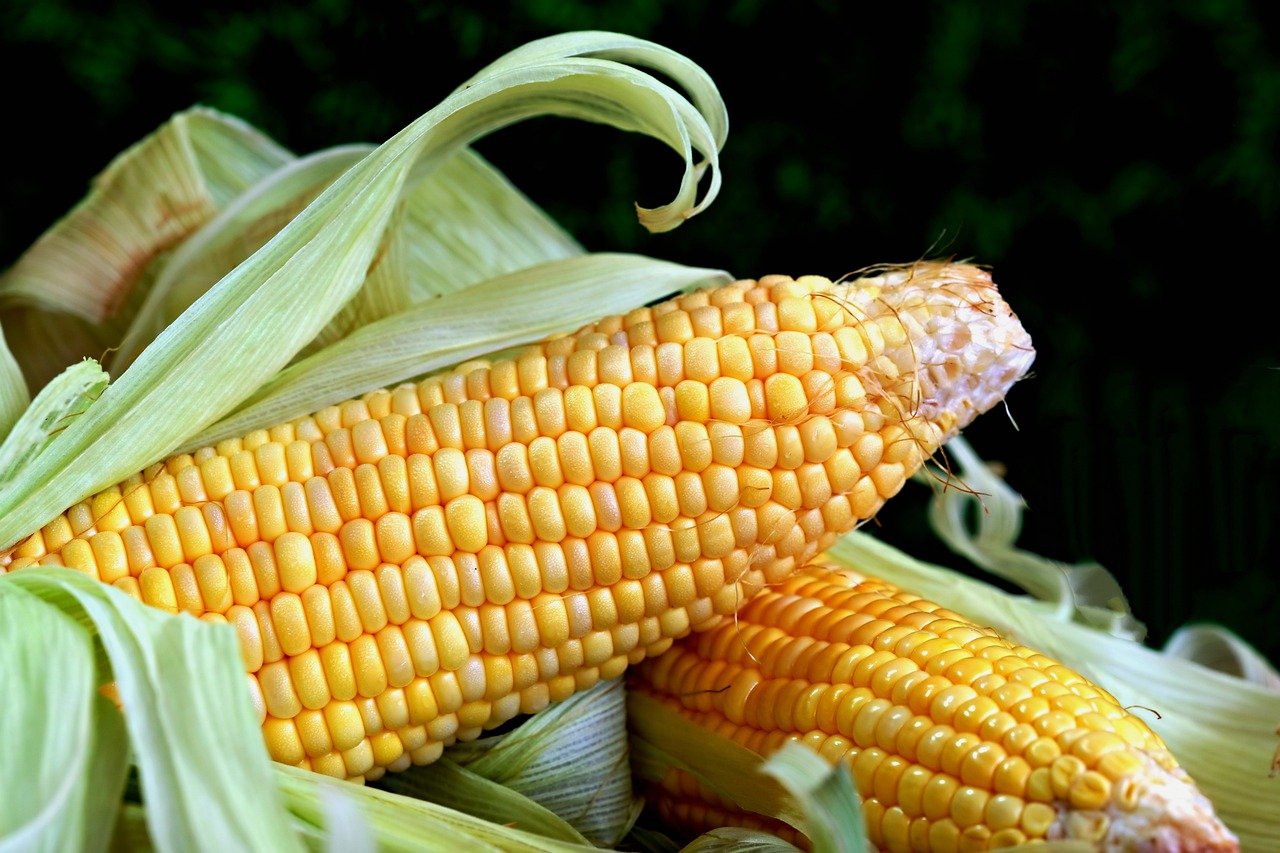Combating Food Shortage during a Crisis
The world can be a turbulent place, and crises can strike when we least expect them. Whether it’s a natural disaster, a pandemic, or economic turmoil, the ripple effects can lead to one pressing issue: food shortages. These shortages can leave communities scrambling for resources, and that’s where the importance of effective strategies comes into play. In this article, we will explore various methods to combat food shortages during crises, focusing on the roles of government, community initiatives, and innovative technologies. Together, these elements form a robust framework to ensure that everyone has access to the food they need, even in the most challenging times.
To tackle food shortages effectively, we first need to understand their causes. Natural disasters, like hurricanes and droughts, can devastate crops and disrupt supply chains. Economic instability can lead to soaring prices, making it difficult for families to afford basic necessities. Furthermore, supply chain disruptions—whether due to global events or local issues—can result in empty shelves and hungry mouths. The impact of these factors is particularly severe on vulnerable populations, who often lack the resources to cope. By recognizing these causes, we can better prepare ourselves and our communities for the challenges ahead.
Governments have a critical responsibility in managing food shortages, especially during crises. They can implement a range of policy measures and emergency response plans to mitigate the effects of food scarcity. For instance, financial support systems can be established to assist low-income families, ensuring they have access to food during tough times. But what does this look like in practice? Let’s break it down further.
Emergency food assistance programs are vital lifelines during crises. These initiatives, which include food banks and meal distribution services, provide immediate relief to those affected by food shortages. For example, food banks often collaborate with local businesses to gather surplus food, which is then distributed to families in need. This not only helps alleviate hunger but also reduces food waste, creating a win-win situation. The effectiveness of these programs highlights the importance of community involvement and government support in ensuring food security.
While government initiatives are crucial, community-based solutions play an equally important role in combating food shortages. Grassroots efforts, such as community gardens and local food drives, empower neighborhoods to take action against food insecurity. Imagine a community coming together to cultivate a shared garden; not only does this provide fresh produce, but it also fosters a sense of unity and cooperation. By harnessing local resources and talent, communities can create sustainable food systems that are less vulnerable to external shocks.
Non-governmental organizations (NGOs) often step in during crises to provide essential food aid. Successful partnerships between governments and NGOs can facilitate effective food distribution and support. For instance, during the COVID-19 pandemic, many governments collaborated with NGOs to ensure that vulnerable populations received the assistance they needed. These partnerships can lead to innovative solutions, such as mobile food distribution units that reach remote areas, ensuring that no one is left behind.
When crises hit, traditional agricultural practices may not suffice to meet the food demands of a growing population. This is where innovative agricultural practices come into play. Techniques like vertical farming, hydroponics, and permaculture can significantly enhance food production, especially in urban settings. Imagine towering green structures in the heart of a city, producing fresh vegetables year-round, regardless of the climate outside. These innovations not only increase food availability but also minimize the environmental impact of farming.
In today’s digital age, technology is a game-changer in combating food shortages. Advancements in agricultural technology, including precision farming and blockchain, improve efficiency and transparency in food supply chains. For example, precision farming uses data analytics to optimize crop yields, reducing waste and maximizing resources. As we delve deeper into these technological solutions, we can see how they play a pivotal role in ensuring food security for all.
Food distribution technologies are revolutionizing how we deliver food aid. Apps and platforms that connect surplus food with those in need are gaining traction, reducing waste and improving access during crises. For instance, some organizations have developed mobile apps that allow restaurants to donate excess food to local shelters, ensuring that it reaches those who need it most. This innovative approach not only addresses food shortages but also promotes a culture of sharing and community support.
Finally, data-driven decision-making enhances crisis response by providing valuable insights. Governments and organizations can use data analytics and predictive modeling to anticipate food shortages and allocate resources effectively. This proactive approach enables them to respond swiftly, ensuring that food reaches those most affected by crises. By leveraging technology and data, we can create a more resilient food system that stands strong in the face of adversity.
- What are the main causes of food shortages? Food shortages can arise from natural disasters, economic instability, and supply chain disruptions.
- How can communities help combat food shortages? Communities can engage in grassroots initiatives like community gardens and food drives to support local food security.
- What role do NGOs play in food distribution? NGOs often partner with governments to provide essential food aid and support to vulnerable populations during crises.

Understanding Food Shortages
Food shortages can feel like a dark cloud hanging over communities, especially during times of crisis. But what exactly causes these shortages? To unravel this complex issue, we must look at several key factors that contribute to food insecurity. Natural disasters, such as hurricanes and droughts, can devastate crops and disrupt supply chains. When a flood wipes out farmland, it’s not just the crops that suffer; the entire community feels the ripple effects. Imagine a farmer watching their life’s work washed away, leaving them unable to provide for their family or community.
Economic instability is another significant player in the food shortage game. When economies falter, jobs are lost, and incomes dwindle. Families that once had the means to purchase nutritious food suddenly find themselves in a precarious position. With rising prices and limited resources, many are forced to make tough choices, often leading to a reliance on cheaper, less nutritious options. This situation can create a vicious cycle of poor health and increased food insecurity.
Supply chain disruptions also play a crucial role in food shortages. In today’s interconnected world, a hiccup in one part of the globe can lead to a cascading effect that impacts food availability everywhere. For example, if a major shipping route is blocked or if a processing plant shuts down due to unforeseen circumstances, the consequences can be dire. The food that was once readily available becomes scarce, leaving many scrambling for alternatives.
To better understand these factors, let’s break them down:
- Natural Disasters: Events like earthquakes, floods, and droughts can destroy crops and disrupt distribution.
- Economic Instability: Economic downturns can lead to job losses and decreased purchasing power.
- Supply Chain Disruptions: Global events, such as pandemics or trade disputes, can halt the flow of food products.
In summary, food shortages are a multifaceted issue that arises from a blend of environmental, economic, and logistical challenges. Understanding these causes is crucial for developing effective strategies to combat food insecurity. As we delve deeper into this topic, we’ll explore how governments, communities, and innovative technologies can work together to create solutions that ensure food security for all, even in the face of adversity.
Q1: What are the primary causes of food shortages during a crisis?
A1: Food shortages can arise from natural disasters, economic instability, and supply chain disruptions, all of which impact food production and distribution.
Q2: How can communities address food shortages?
A2: Communities can implement grassroots initiatives like community gardens, food drives, and local food banks to support those in need during crises.
Q3: What role do governments play in mitigating food shortages?
A3: Governments can establish emergency food assistance programs, create policies to stabilize food prices, and support agricultural innovation to enhance food security.

The Role of Government
When it comes to tackling the issue of food shortages during crises, the government's role cannot be overstated. Governments are like the captains of a ship navigating through turbulent waters; they must steer the course to ensure that their citizens do not go hungry. From crafting effective policies to implementing emergency response plans, the government is at the forefront of ensuring food security. But how exactly do they manage this complex task?
First and foremost, governments need to establish and maintain robust policy measures aimed at food security. This can include regulations that support local farmers, subsidies for food production, and incentives for sustainable practices. By doing so, they create an environment where food can be produced efficiently, even in challenging times. Furthermore, they must also prepare for the unexpected. Imagine a sudden natural disaster or an economic downturn; having a well-thought-out emergency response plan can make all the difference. These plans often include stockpiling essential food items and establishing quick distribution channels to get food to those who need it most.
Another crucial aspect of governmental support is the establishment of financial support systems. During crises, many families find themselves in dire financial straits, unable to afford basic necessities. Governments can step in by providing direct financial assistance or food vouchers that allow families to purchase food from local markets. This not only helps to alleviate immediate hunger but also supports local economies, creating a win-win situation.
Within the framework of government support, emergency food assistance programs play a vital role. These programs are like lifelines thrown to individuals and families who find themselves in precarious situations. They can take various forms, including:
- Food banks that collect and distribute food donations.
- Meal distribution services that provide hot meals to those in need.
- Community kitchens that prepare food for vulnerable populations.
These initiatives are crucial during crises, as they provide immediate relief and help to prevent long-term food insecurity.
While governments play a significant role, they cannot do it alone. Community-based solutions are essential in addressing food shortages effectively. Grassroots efforts, such as community gardens and local food drives, empower neighborhoods to come together and combat food insecurity collectively. Imagine a neighborhood where residents unite to grow their own vegetables; not only does this provide fresh produce, but it also fosters a sense of community and resilience. Governments can support these initiatives by providing resources, training, and funding to help communities thrive.
Non-governmental organizations (NGOs) often play a pivotal role during crises, stepping in to provide food aid when it is most needed. Successful partnerships between governments and NGOs can facilitate food distribution and support. For instance, during a crisis, governments can collaborate with NGOs to identify the areas most affected by food shortages and coordinate efforts to deliver aid. This collaborative approach ensures that food reaches those who need it most, enhancing the overall effectiveness of food assistance programs.
Finally, governments can also promote innovative agricultural practices that enhance food production during crises. Techniques such as vertical farming, hydroponics, and permaculture can increase food availability in both urban and rural areas. By investing in research and development, governments can foster a culture of innovation that leads to sustainable food production methods capable of withstanding crises.
In conclusion, the role of government in combating food shortages during crises is multifaceted and crucial. From policy measures to emergency assistance programs, governments must take proactive steps to ensure that their citizens have access to sufficient food. By fostering community efforts and partnering with NGOs, they can create a resilient food system that stands strong even in the face of adversity.
Q1: What are the main responsibilities of the government during a food crisis?
A1: The government is responsible for creating policies to ensure food security, implementing emergency response plans, providing financial assistance, and coordinating with NGOs and community organizations for effective food distribution.
Q2: How can communities help during food shortages?
A2: Communities can establish initiatives like community gardens, food drives, and local meal distribution services to support those in need. Collaboration with local governments can enhance these efforts.
Q3: What innovative practices can governments promote to increase food production?
A3: Governments can support practices such as vertical farming, hydroponics, and permaculture, which allow for sustainable food production even in limited spaces.

Emergency Food Assistance Programs
When crises strike, whether due to natural disasters, economic downturns, or global pandemics, become a lifeline for countless individuals and families. These programs are designed to provide immediate relief to those facing food insecurity, ensuring that no one has to go to bed hungry during tough times. Imagine a community where food is readily available for everyone, even in the face of adversity. This is the goal of various initiatives that come together to combat hunger.
One of the most well-known forms of emergency food assistance is the network of food banks. Food banks operate on the principle of collecting surplus food from various sources, including grocery stores, farms, and restaurants, and distributing it to those in need. They serve as a crucial connector between food donors and individuals experiencing food shortages. In addition to food banks, meal distribution services play a vital role, especially during emergencies. These services often provide hot meals to communities, ensuring that families have access to nutritious food without the stress of cooking.
Moreover, many governments implement food assistance programs like the Supplemental Nutrition Assistance Program (SNAP) in the United States, which offers financial support to low-income individuals and families. This program enables recipients to purchase food at grocery stores, thus empowering them to make choices that best suit their dietary needs and preferences. Such initiatives not only alleviate hunger but also stimulate local economies by increasing food purchases.
In addition to government-led efforts, community-driven initiatives are also pivotal. Local organizations often rally together to create food drives and fundraising events that stock food pantries and support meal programs. These grassroots movements exemplify the power of community solidarity, showcasing how collective action can make a significant difference in times of crisis. For instance, during the COVID-19 pandemic, many neighborhoods organized food distribution events to support vulnerable populations, proving that when people come together, they can overcome even the most daunting challenges.
To further illustrate the impact of emergency food assistance programs, consider the following table that highlights some key statistics:
| Program Type | Number of Individuals Served | Annual Food Distributed (in pounds) |
|---|---|---|
| Food Banks | 40 million | 6 billion |
| Meal Distribution Services | 10 million | 1.5 billion |
| SNAP | 42 million | N/A |
As we can see, the scale of these programs is immense, and their contribution to fighting food insecurity cannot be overstated. However, there is always room for improvement. Strengthening the collaboration between government entities, non-profits, and community organizations can enhance the effectiveness of these programs, ensuring that food reaches those who need it most. Ultimately, the goal is to create a resilient food system that can withstand crises and provide for all.
In conclusion, emergency food assistance programs are a vital component of our societal safety net. They not only provide immediate relief but also foster a sense of community and solidarity among individuals facing hardship. As we navigate through uncertain times, it’s crucial to support these initiatives and advocate for policies that strengthen food security for everyone.
- What are emergency food assistance programs? These programs provide immediate food relief to individuals and families facing food insecurity during crises.
- How can I help my local food bank? You can volunteer your time, donate food or funds, and raise awareness in your community about the importance of food security.
- Are there eligibility requirements for food assistance programs? Yes, most programs have specific eligibility criteria based on income, household size, and other factors.

Community-Based Solutions
When it comes to tackling the issue of food shortages, community-based solutions emerge as a powerful force. Imagine a neighborhood where everyone pitches in, sharing resources and knowledge to create a sustainable food system. This is not just a dream; it’s a reality in many places where communities come together to combat food insecurity. These grassroots efforts often spring from the heart of the community, empowering individuals to take action and support one another in times of need.
One of the most effective ways communities address food shortages is through the establishment of community gardens. These gardens not only provide fresh produce but also foster a sense of community spirit. People of all ages come together to plant, tend, and harvest crops, learning valuable skills along the way. In fact, studies have shown that community gardens can increase access to nutritious food, reduce food deserts, and even improve mental health by creating green spaces where neighbors can connect.
Additionally, local food drives play a crucial role in ensuring that those in need receive adequate nutrition. These initiatives can take many forms, from school-based food drives to church-led collections. By mobilizing community members to donate non-perishable items or even fresh produce from their own gardens, these drives can significantly impact food availability for vulnerable populations. It’s a beautiful example of how collective action can lead to tangible results.
Moreover, community-based solutions often involve partnerships with local businesses. For instance, some restaurants and grocery stores have begun donating surplus food to local food banks or community kitchens. This not only helps reduce food waste but also ensures that excess food reaches those who need it most. It’s a win-win situation: businesses can contribute positively to their community while also managing their inventory more effectively.
In summary, community-based solutions are essential in the fight against food shortages. They leverage local resources, foster collaboration, and create sustainable systems that benefit everyone involved. As we look to the future, it’s clear that empowering communities to take charge of their food security is not just an option—it’s a necessity.
- What are community gardens? Community gardens are shared spaces where individuals come together to grow fruits, vegetables, and flowers, promoting food security and community bonding.
- How do food drives work? Food drives collect non-perishable food items from community members, which are then distributed to those in need, often through local food banks or shelters.
- What role do local businesses play in combating food shortages? Local businesses can donate surplus food to community organizations, helping to reduce waste and support those in need.

Partnerships with NGOs
In times of crisis, the collaboration between governments and non-governmental organizations (NGOs) can be a lifeline for communities grappling with food shortages. These partnerships are not just beneficial; they are essential in ensuring that food reaches those who need it most. NGOs often bring a wealth of experience, local knowledge, and a network of volunteers that can mobilize quickly, making them invaluable allies in the fight against food insecurity.
One of the key advantages of partnering with NGOs is their ability to operate on the ground, often in areas where government reach may be limited. For instance, organizations like the World Food Programme and local charities have established infrastructures that can respond rapidly to food crises. They can set up emergency food distribution points, organize community kitchens, and provide nutritional education, ensuring that not only is food available, but it is also nutritious and culturally appropriate.
Additionally, these partnerships often involve sharing resources and data, which can enhance the effectiveness of food distribution efforts. For example, a government may provide funding or logistical support, while an NGO brings in volunteers and local insights. Together, they can create a comprehensive response plan that addresses both immediate needs and long-term food security.
| NGO | Role in Food Distribution | Key Achievements |
|---|---|---|
| World Food Programme | Emergency food assistance and logistics | Provided assistance to over 100 million people in 2020 |
| Feeding America | Food bank network and hunger relief | Distributed 4.2 billion meals in a year |
| Action Against Hunger | Nutritional support and advocacy | Helped reduce malnutrition rates in various regions |
Moreover, these collaborations can lead to innovative solutions that address the root causes of food insecurity. For instance, NGOs often engage in advocacy work, influencing policies that promote sustainable agriculture and fair food distribution practices. They also work to raise awareness about the importance of food security within communities, empowering individuals to take action and participate in local initiatives.
In conclusion, partnerships with NGOs are critical in combating food shortages during crises. By leveraging their unique strengths and resources, governments and NGOs can create a robust framework for food distribution that not only addresses immediate needs but also builds resilience against future challenges. The synergy of these partnerships can transform communities, turning vulnerability into strength and ensuring that no one goes hungry, even in the toughest of times.
- What role do NGOs play in food security?
NGOs provide immediate food assistance, advocate for policy changes, and promote sustainable agricultural practices to enhance food security. - How can I help local NGOs combat food shortages?
You can volunteer your time, donate food or funds, or raise awareness about their initiatives in your community. - Are partnerships between governments and NGOs effective?
Yes, these partnerships combine resources and expertise, leading to more effective and efficient responses to food shortages.

Innovative Agricultural Practices
In today’s world, where food shortages can arise from various crises, innovative agricultural practices are not just a luxury; they are a necessity. Imagine a world where food is grown efficiently, sustainably, and within our urban landscapes. This is no longer a distant dream; it’s becoming a reality through techniques that revolutionize how we approach agriculture. One of the most exciting developments is vertical farming. This method allows crops to be grown in stacked layers, often integrated into urban buildings. By utilizing controlled environments, vertical farms can produce food year-round, drastically reducing the dependence on seasonal agriculture.
Another groundbreaking practice is hydroponics, which involves growing plants in nutrient-rich water instead of soil. This technique not only conserves water but also speeds up plant growth. Hydroponic systems can be set up in small spaces, making them ideal for urban dwellers looking to contribute to local food supply. Moreover, these systems can yield up to 10 times more produce than traditional farming methods, making them a powerful ally in the fight against food scarcity.
Permaculture is yet another innovative approach that emphasizes working with nature rather than against it. By creating self-sustaining ecosystems, permaculture designs can produce food while enhancing biodiversity. This method encourages the use of native plants and animals to maintain soil health and water efficiency. Imagine a community where gardens flourish, not just with vegetables, but with a variety of plants that attract beneficial insects and wildlife, creating a balanced ecosystem.
To further illustrate the impact of these practices, consider the following table that compares traditional farming with innovative methods:
| Aspect | Traditional Farming | Innovative Practices |
|---|---|---|
| Space Utilization | Requires large plots of land | Utilizes vertical space and urban areas |
| Water Usage | High water consumption | Minimal water usage through hydroponics |
| Crop Yield | Seasonal yield limitations | Year-round production with higher yields |
| Environmental Impact | Potential for soil degradation | Enhances biodiversity and soil health |
As we delve deeper into these innovative agricultural practices, it’s clear that they not only address the immediate needs of food production but also pave the way for a more sustainable future. By adopting these methods, communities can become more resilient against food shortages caused by crises, ensuring that everyone has access to the nourishment they need.
In conclusion, the integration of innovative agricultural practices is vital for combating food shortages. They offer solutions that are not only practical but also environmentally friendly. As we embrace these changes, we can look forward to a future where food security is a reality for all, even in the face of adversity.
- What is vertical farming? Vertical farming is the practice of growing crops in stacked layers, often in controlled indoor environments, allowing for year-round production.
- How does hydroponics work? Hydroponics involves growing plants in a nutrient-rich water solution instead of soil, which conserves water and accelerates growth.
- What is permaculture? Permaculture is a sustainable farming approach that creates self-sustaining ecosystems, promoting biodiversity and efficient resource use.
- Can these practices be implemented in urban areas? Yes, innovative agricultural practices like vertical farming and hydroponics are particularly suited for urban environments, utilizing limited space effectively.

Technological Solutions
In today's fast-paced world, technology is not just a luxury; it's a necessity, especially when it comes to addressing food shortages. As crises unfold—be it due to natural disasters, pandemics, or economic downturns—innovative technologies emerge as powerful allies in the fight against food insecurity. Think of technology as the superhero in our story, swooping in to save the day by enhancing food production, improving distribution, and ensuring that no one goes hungry.
One of the most significant advancements is in the realm of agricultural technology. Techniques like precision farming allow farmers to optimize their resources by using data analytics to determine the best times to plant, water, and harvest crops. This not only increases yield but also minimizes waste. Imagine being able to predict the exact amount of water your crops need, reducing both costs and environmental impact! The beauty of precision farming lies in its ability to adapt to changing conditions, making it a game-changer during crises.
Moreover, blockchain technology is revolutionizing the way we manage food supply chains. By providing a transparent and immutable record of transactions, blockchain ensures that every step of the food journey—from farm to table—is traceable. This transparency not only builds trust among consumers but also helps identify inefficiencies in the supply chain. For instance, if there’s a sudden spike in demand for a particular food item, blockchain can quickly pinpoint where the bottleneck is occurring, allowing for swift action to be taken. It’s like having a crystal ball that shows you where help is needed most!
Another exciting development is the rise of food distribution technologies. Various apps and platforms are being developed to connect surplus food from restaurants and grocery stores with those in need. These technologies not only reduce food waste but also improve access to food during crises. Imagine a world where a simple app can notify you of nearby food drives or surplus meals available for pickup—this is the future we are striving for. By leveraging technology, we can ensure that excess food doesn’t end up in landfills while hungry families receive the nourishment they need.
Finally, the role of data-driven decision-making cannot be overstated. Data analytics and predictive modeling are becoming essential tools for governments and organizations tackling food shortages. By analyzing patterns and trends, decision-makers can anticipate potential food shortages before they escalate into full-blown crises. For example, if data shows a decline in crop yields due to adverse weather conditions, governments can preemptively allocate resources to areas that are likely to be hit hardest. It’s like having a weather forecast for food security!
In conclusion, technological solutions are crucial in the ongoing battle against food shortages. From innovative agricultural practices to cutting-edge distribution technologies, the potential for technology to create a resilient food system is immense. By embracing these advancements, we can work towards a future where food security is not just a dream, but a reality for everyone.
- What are some examples of agricultural technology?
Examples include precision farming, vertical farming, hydroponics, and the use of drones for crop monitoring.
- How does blockchain improve food distribution?
Blockchain enhances transparency and traceability in the food supply chain, helping to identify inefficiencies and build consumer trust.
- What role do apps play in addressing food shortages?
Apps can connect surplus food from businesses to those in need, reducing waste and improving access to food during crises.
- How can data analytics help prevent food shortages?
Data analytics allows for the anticipation of food shortages by analyzing trends and patterns, enabling proactive resource allocation.

Food Distribution Technologies
In today's world, where food scarcity can strike at any moment, the role of has never been more critical. These technologies are not just about delivering food; they are about ensuring that every morsel reaches those who need it most. Imagine a scenario where surplus food from restaurants and grocery stores can be efficiently redirected to food banks and shelters, minimizing waste while maximizing nourishment for the hungry. This is where innovative platforms come into play, connecting food donors with local charities and individuals in need.
One of the most impactful advancements in food distribution is the rise of mobile applications designed to facilitate food rescue. These apps allow businesses to list surplus food items that are still safe for consumption, and within moments, local organizations can claim these items for distribution. For example, platforms like Too Good To Go and Food Rescue US have made significant strides in reducing food waste while simultaneously addressing hunger. Users can simply download the app, browse available food options, and pick up meals at discounted rates, thus benefiting both the environment and their wallets.
Moreover, the integration of blockchain technology into food distribution systems is revolutionizing how we track food supply chains. By providing a transparent ledger of food origins, blockchain ensures that every step from farm to table is documented and verifiable. This not only builds trust among consumers but also helps organizations pinpoint inefficiencies in the distribution process. For instance, if a foodborne illness outbreak occurs, blockchain allows for rapid tracing of contaminated products, ensuring swift action can be taken to protect public health.
In addition to these technological innovations, data analytics plays a pivotal role in enhancing food distribution efficiency. By analyzing consumption patterns and predicting potential shortages, organizations can better allocate resources where they are needed most. For example, during a crisis, predictive modeling can help determine which neighborhoods are at the highest risk of food insecurity, allowing for targeted food distribution efforts. This data-driven approach not only optimizes the logistics of food delivery but also ensures that no community is overlooked during times of need.
Another noteworthy advancement is the use of drones and autonomous vehicles for food delivery. These technologies are particularly beneficial in remote areas where traditional delivery methods may be challenging. Drones can navigate tough terrains and deliver food supplies to those who might otherwise be cut off from essential resources. As these technologies continue to evolve, they promise to bridge the gap between surplus food and those in dire need, ensuring that help arrives swiftly and efficiently.
In summary, food distribution technologies are transforming the landscape of hunger relief. By leveraging mobile apps, blockchain, data analytics, and even drones, we can create a more resilient food distribution network. As we continue to innovate and adapt these technologies, we pave the way for a future where food scarcity becomes a relic of the past, and every individual has access to the nourishment they deserve.
Q: How do food distribution technologies help reduce food waste?
A: These technologies connect food donors with organizations that can distribute surplus food, ensuring that edible items do not go to waste and instead reach those in need.
Q: What role does blockchain play in food distribution?
A: Blockchain provides a transparent and verifiable record of food supply chains, enhancing trust and safety by allowing for quick tracing of products in case of contamination.
Q: Can drones really deliver food?
A: Yes, drones are being developed to deliver food supplies, especially in remote areas where traditional delivery might be difficult.
Q: How can I get involved with food distribution initiatives?
A: You can volunteer with local food banks, donate surplus food through apps, or support organizations that focus on food rescue and distribution.

Data-Driven Decision Making
In today's fast-paced world, the ability to make informed decisions quickly can mean the difference between alleviating a food crisis and watching it spiral out of control. is a powerful approach that leverages the vast amounts of data available to governments, NGOs, and organizations to anticipate food shortages and respond effectively. Imagine trying to navigate through a dense fog without a map; that’s what managing food scarcity looks like without data. By utilizing analytics, predictive modeling, and real-time data, stakeholders can see the road ahead more clearly.
One of the key advantages of data-driven approaches is the ability to analyze trends and patterns that may not be immediately visible. For instance, by examining historical data on crop yields, weather patterns, and economic indicators, decision-makers can identify potential risks before they become critical. This proactive stance allows for the allocation of resources where they are most needed, ensuring that food aid reaches vulnerable populations in a timely manner. It's like having a weather forecast for food security—knowing when a storm is coming enables you to prepare accordingly.
Moreover, the integration of technology into food supply chains has revolutionized how data is collected and analyzed. With the advent of Internet of Things (IoT) devices, sensors can monitor soil conditions, crop health, and even predict harvest times. This real-time data can be visualized in dashboards that provide insights at a glance, making it easier for decision-makers to understand the current landscape. For example, a government agency might use data from satellite imagery to assess the impact of a drought on agricultural areas, allowing them to respond with targeted interventions.
To illustrate the impact of data-driven decision making, consider the following table that outlines various data sources and their applications in combating food shortages:
| Data Source | Application |
|---|---|
| Satellite Imagery | Monitoring crop health and land use |
| Weather Forecasts | Predicting agricultural productivity and planning |
| Market Price Trends | Understanding economic conditions affecting food access |
| Demographic Data | Identifying vulnerable populations in need of support |
Furthermore, the collaboration between various stakeholders enhances the effectiveness of data-driven strategies. Governments, NGOs, and private sectors can share data to create a more comprehensive picture of food security challenges. This collaboration is akin to assembling a jigsaw puzzle—each piece of data contributes to the overall image, revealing insights that might not be evident when viewed in isolation. By working together, these entities can implement more coordinated and efficient responses, ensuring that food aid is distributed where it is needed most.
In conclusion, data-driven decision making is not just a buzzword; it is a crucial element in the fight against food shortages during crises. By harnessing the power of data, stakeholders can make informed choices that lead to timely interventions and effective resource allocation. In a world where food insecurity can escalate rapidly, having the right information at the right time is like having a lifebuoy in turbulent waters—it can save lives and restore hope.
- What is data-driven decision making? Data-driven decision making involves using data analytics and insights to guide choices and actions, particularly in responding to food shortages.
- How can technology improve food distribution? Technology can streamline logistics, connect surplus food with those in need, and provide real-time data for better resource allocation.
- What role do NGOs play in food security? NGOs often facilitate food distribution and provide support during crises, working in partnership with governments to enhance food security efforts.
- How can communities contribute to combating food shortages? Communities can engage in grassroots initiatives like community gardens and food drives, empowering local efforts to address food insecurity.
Frequently Asked Questions
- What are the main causes of food shortages during a crisis?
Food shortages can arise from a variety of factors, including natural disasters like floods or droughts, economic instability that disrupts food production and distribution, and supply chain disruptions. These elements often leave vulnerable populations struggling to access basic nutrition.
- How can governments help alleviate food shortages?
Governments play a crucial role by implementing policy measures such as emergency response plans and financial support systems. These initiatives can include funding for food banks, subsidies for farmers, and policies that ensure efficient food distribution during crises.
- What are emergency food assistance programs?
Emergency food assistance programs are designed to provide immediate relief to those affected by food shortages. This includes services such as food banks, meal distribution initiatives, and community kitchens that ensure people have access to nutritious meals when they need them most.
- How do community-based solutions contribute to food security?
Community-based solutions, like community gardens and local food drives, empower neighborhoods to work together in combating food insecurity. These grassroots efforts foster collaboration and resilience, allowing communities to produce and distribute food locally, which can be critical during crises.
- What role do NGOs play in addressing food shortages?
Non-governmental organizations (NGOs) are often instrumental in providing food aid during crises. They partner with governments to facilitate food distribution, mobilize resources, and implement programs that directly support those in need, ensuring that help reaches the most vulnerable populations.
- What innovative agricultural practices can help increase food production?
Innovative agricultural practices such as vertical farming, hydroponics, and permaculture can significantly enhance food production. These methods allow for more efficient use of space and resources, making it possible to grow food in urban settings and areas with limited arable land.
- How does technology improve food distribution during crises?
Technology streamlines food distribution through apps and platforms that connect surplus food with those in need. This not only reduces waste but also improves access to food for individuals and families facing shortages, ensuring that resources are utilized effectively.
- What is data-driven decision-making in the context of food security?
Data-driven decision-making involves using data analytics and predictive modeling to anticipate food shortages and allocate resources effectively. By analyzing trends and patterns, governments and organizations can respond proactively to crises, ensuring that food aid reaches those who need it most.



















